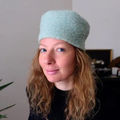Interviews
Slight increase in cotton contamination, ITMF survey
17 Feb '12
3 min read
After some improvements in the recent past foreign matter, stickiness and seed-coat fragments in raw cotton pose serious challenges to the cotton spinning industry worldwide. This is the general conclusion to be drawn from the “Cotton Contamination Survey 2011” which has just been released by the International Textile Manufacturers Federation (ITMF).
The survey is carried out every other year, the 2011 edition being the twelfth in the series since the changeover to a new methodology in 1989. In the 2011 report, 119 spinning mills located in 24 countries evaluated 71 different cotton growths.
The level of cottons modestly or seriously contaminated as perceived by the spinning mills from around the world rose slightly from 22% to 23% compared to the last survey in 2009. A closer look at the extent of the contamination shows that 7% (2009: 6%) of all cotton evaluated were seriously contaminated by some sort of foreign matter whereas 16% (2009: 15%) were only moderately contaminated. As the summary data are arithmetic averages of the different contaminants, the extent of contamination is fully illustrated only by the results for the individual contaminants.
They range from 5% for “tar” (2009: 4%) to 51% of all cottons processed being moderately or seriously contaminated by “organic matter”, i.e. leaves, feathers, paper, leather, etc. (2009: 42%). Other serious contaminants are “inorganic matter” (31%), “fabrics made of cotton” (30%), “strings made of woven plastic” (29%) as well as “fabrics made of woven plastic” and “strings made of plastic film” (28% each). The most contaminated cotton descriptions considered for the survey originated in India, Nigeria, Zimbabwe, China and Turkey. In contrast, very clean raw cottons were produced in the USA, (Texas High Plains, Arizona, Pima, USA-Others, Memphis and California), Syria, Benin, Brazil, Spain, Argentina, Greece and Australia).
The presence of sticky cotton as perceived by the spinning mills increased in 2011 significantly from the record low of 16% in 2009 to 20%. While this level is still lower than the long-term average, the level of stickiness is still considerable high and remains a major challenge to the global cotton spinning industry. Descriptions that were affected most by stickiness were those from India (DCH, MCU-5, India-Others), Syria, USA (California, Pima), Spain, Mali and Uzbekistan (Medium-Staples. On the other end of the range, cottons from Argentina, Turkey (Izmir), USA (Arizona), Egypt (Giza), India (J-34) and USA (Texas High Plaines) were not or hardly affected by stickiness.
With regard to seed-coat fragments the Cotton Contamination Survey 2011 shows that their appearance in cotton growths remains an issue for spinners around the world. 38% of cotton spinners (2009: 31%) claim that they have encountered seed-coat fragments in the cotton growths consumed. This is a jump of 7 percentage points, up from only 31% in 2009, the lowest level since including measuring the level of seed-coat fragments in the survey in 1991.
The origins affected most by seed-coat fragments are those from Nigeria, India (India–Others, MCU-5, Shankar-4/6, J-34) USA (South Eastern, California), Ivory Coast and Turkey (Turkey-Others). Cotton descriptions for which the existence of seed-coat fragments was negligible (prevalence of less than 20%) included those from Australia, Benin, India (Others), Pakistan (Others), and the US (California, Texas High Plains).
The survey is carried out every other year, the 2011 edition being the twelfth in the series since the changeover to a new methodology in 1989. In the 2011 report, 119 spinning mills located in 24 countries evaluated 71 different cotton growths.
The level of cottons modestly or seriously contaminated as perceived by the spinning mills from around the world rose slightly from 22% to 23% compared to the last survey in 2009. A closer look at the extent of the contamination shows that 7% (2009: 6%) of all cotton evaluated were seriously contaminated by some sort of foreign matter whereas 16% (2009: 15%) were only moderately contaminated. As the summary data are arithmetic averages of the different contaminants, the extent of contamination is fully illustrated only by the results for the individual contaminants.
They range from 5% for “tar” (2009: 4%) to 51% of all cottons processed being moderately or seriously contaminated by “organic matter”, i.e. leaves, feathers, paper, leather, etc. (2009: 42%). Other serious contaminants are “inorganic matter” (31%), “fabrics made of cotton” (30%), “strings made of woven plastic” (29%) as well as “fabrics made of woven plastic” and “strings made of plastic film” (28% each). The most contaminated cotton descriptions considered for the survey originated in India, Nigeria, Zimbabwe, China and Turkey. In contrast, very clean raw cottons were produced in the USA, (Texas High Plains, Arizona, Pima, USA-Others, Memphis and California), Syria, Benin, Brazil, Spain, Argentina, Greece and Australia).
The presence of sticky cotton as perceived by the spinning mills increased in 2011 significantly from the record low of 16% in 2009 to 20%. While this level is still lower than the long-term average, the level of stickiness is still considerable high and remains a major challenge to the global cotton spinning industry. Descriptions that were affected most by stickiness were those from India (DCH, MCU-5, India-Others), Syria, USA (California, Pima), Spain, Mali and Uzbekistan (Medium-Staples. On the other end of the range, cottons from Argentina, Turkey (Izmir), USA (Arizona), Egypt (Giza), India (J-34) and USA (Texas High Plaines) were not or hardly affected by stickiness.
With regard to seed-coat fragments the Cotton Contamination Survey 2011 shows that their appearance in cotton growths remains an issue for spinners around the world. 38% of cotton spinners (2009: 31%) claim that they have encountered seed-coat fragments in the cotton growths consumed. This is a jump of 7 percentage points, up from only 31% in 2009, the lowest level since including measuring the level of seed-coat fragments in the survey in 1991.
The origins affected most by seed-coat fragments are those from Nigeria, India (India–Others, MCU-5, Shankar-4/6, J-34) USA (South Eastern, California), Ivory Coast and Turkey (Turkey-Others). Cotton descriptions for which the existence of seed-coat fragments was negligible (prevalence of less than 20%) included those from Australia, Benin, India (Others), Pakistan (Others), and the US (California, Texas High Plains).
International Textile Manufacturers Federation (ITMF)
Popular News
Leave your Comments
Editor’s Pick
Andreas Rass
ZIMMER AUSTRIA | Digital Printing Systems
Kimberly Morgan and Rik Veltman
K3 Business Technology Group PLC
Rajesh Mittal
Cedaar Textile Private Limited
































-Ltd..jpg?tr=w-120,h-60,c-at_max,cm-pad_resize,bg-ffffff)





.jpg?tr=w-120,h-60,c-at_max,cm-pad_resize,bg-ffffff)
.jpg?tr=w-120,h-60,c-at_max,cm-pad_resize,bg-ffffff)






